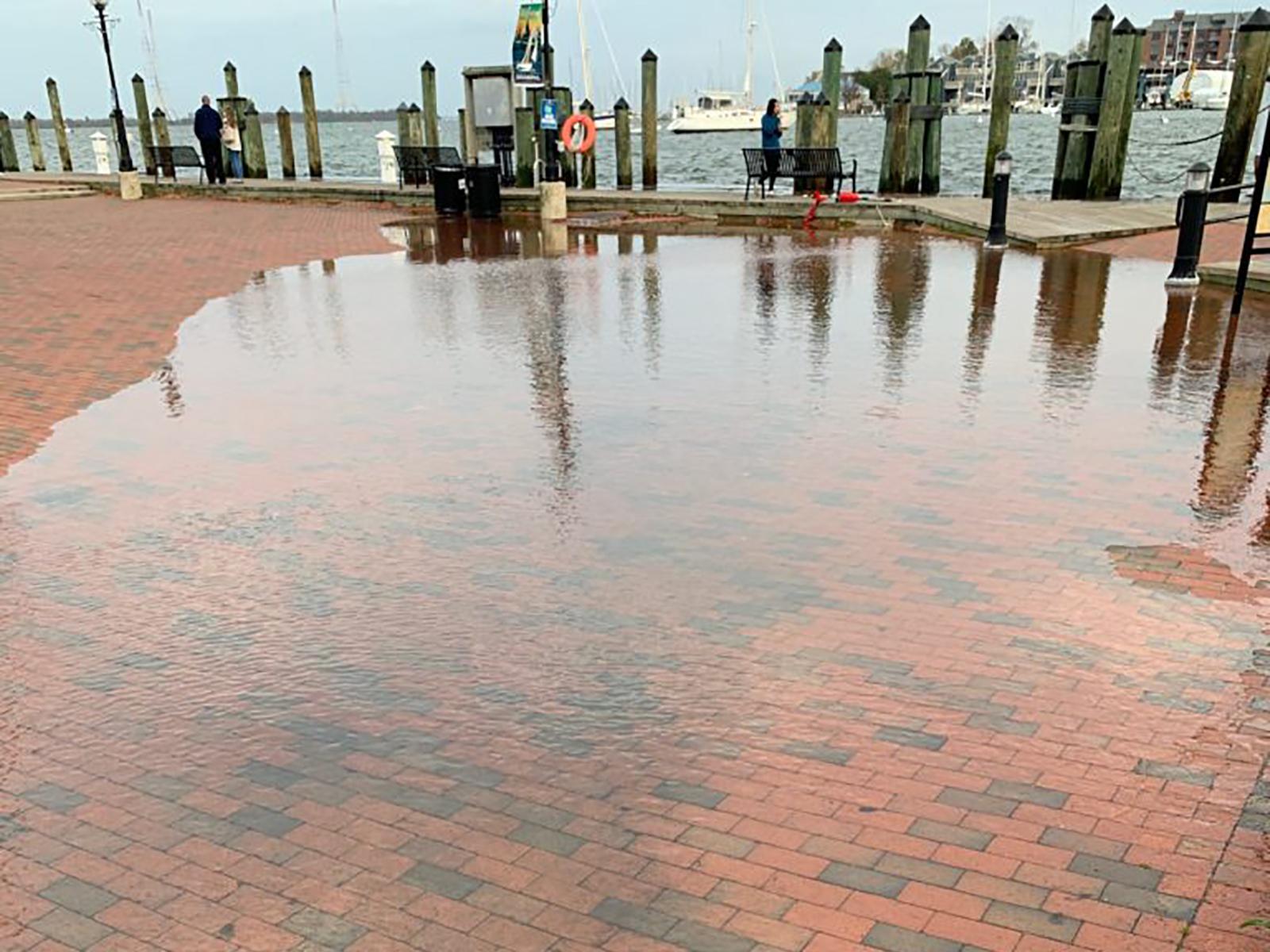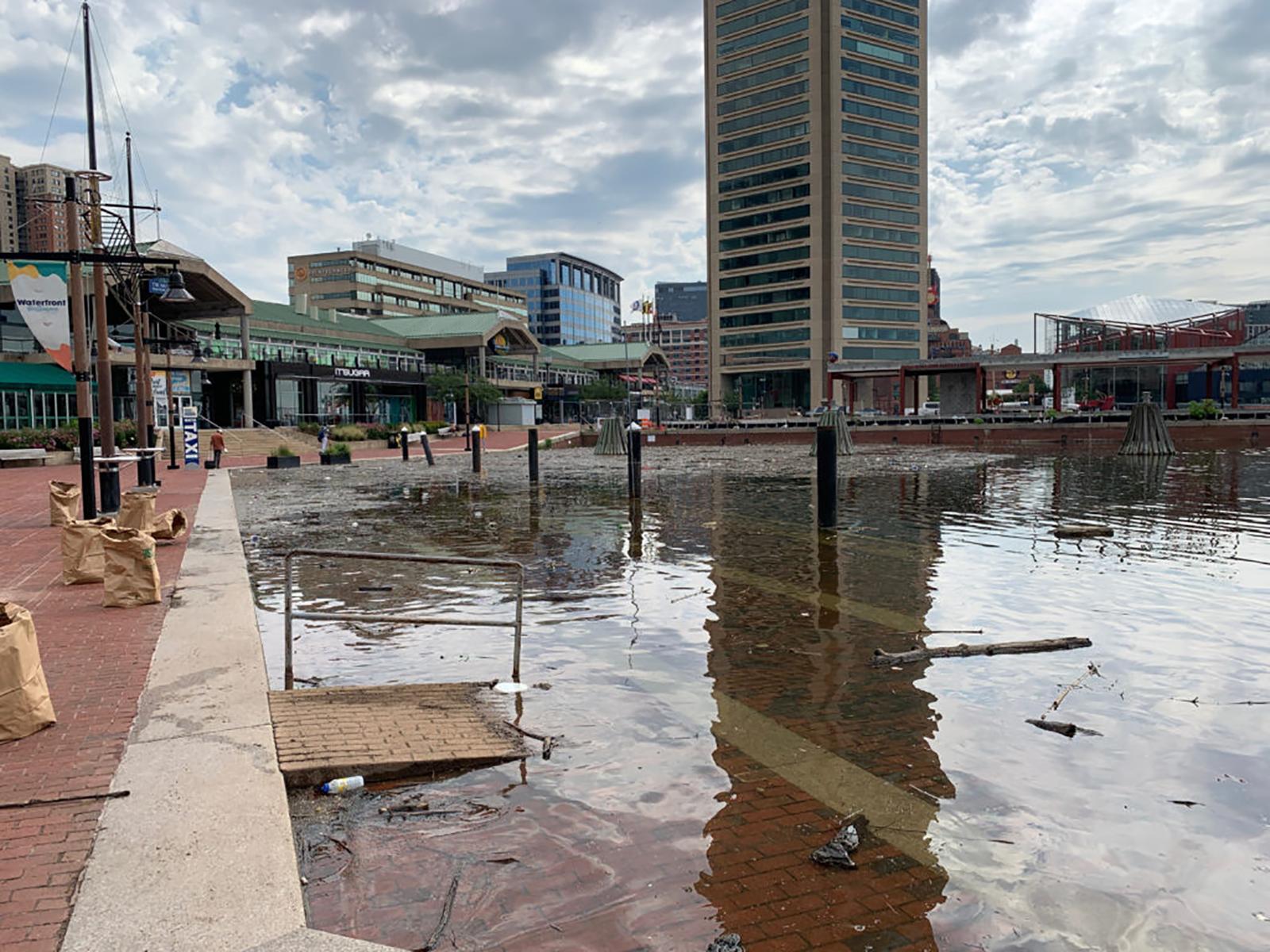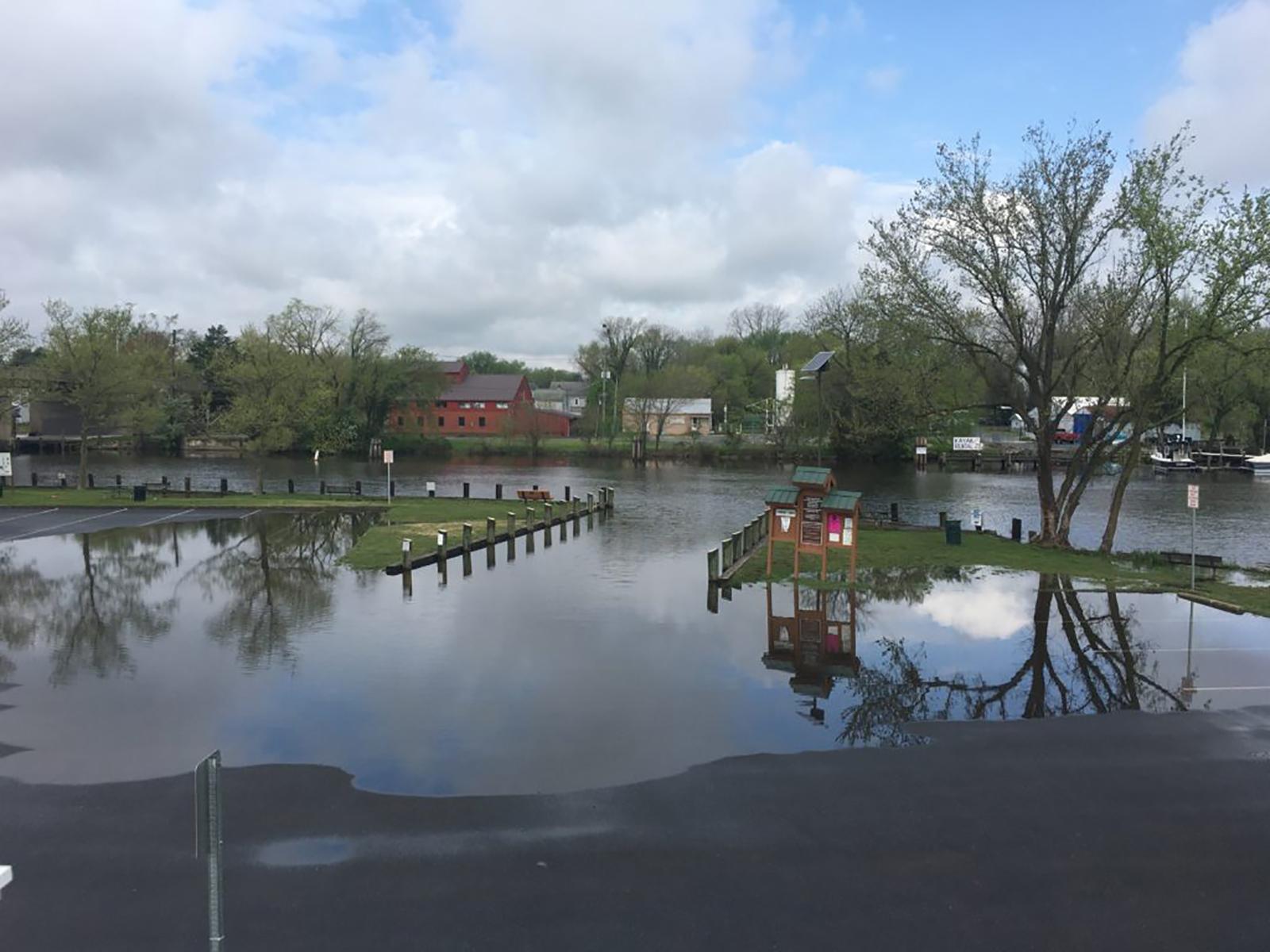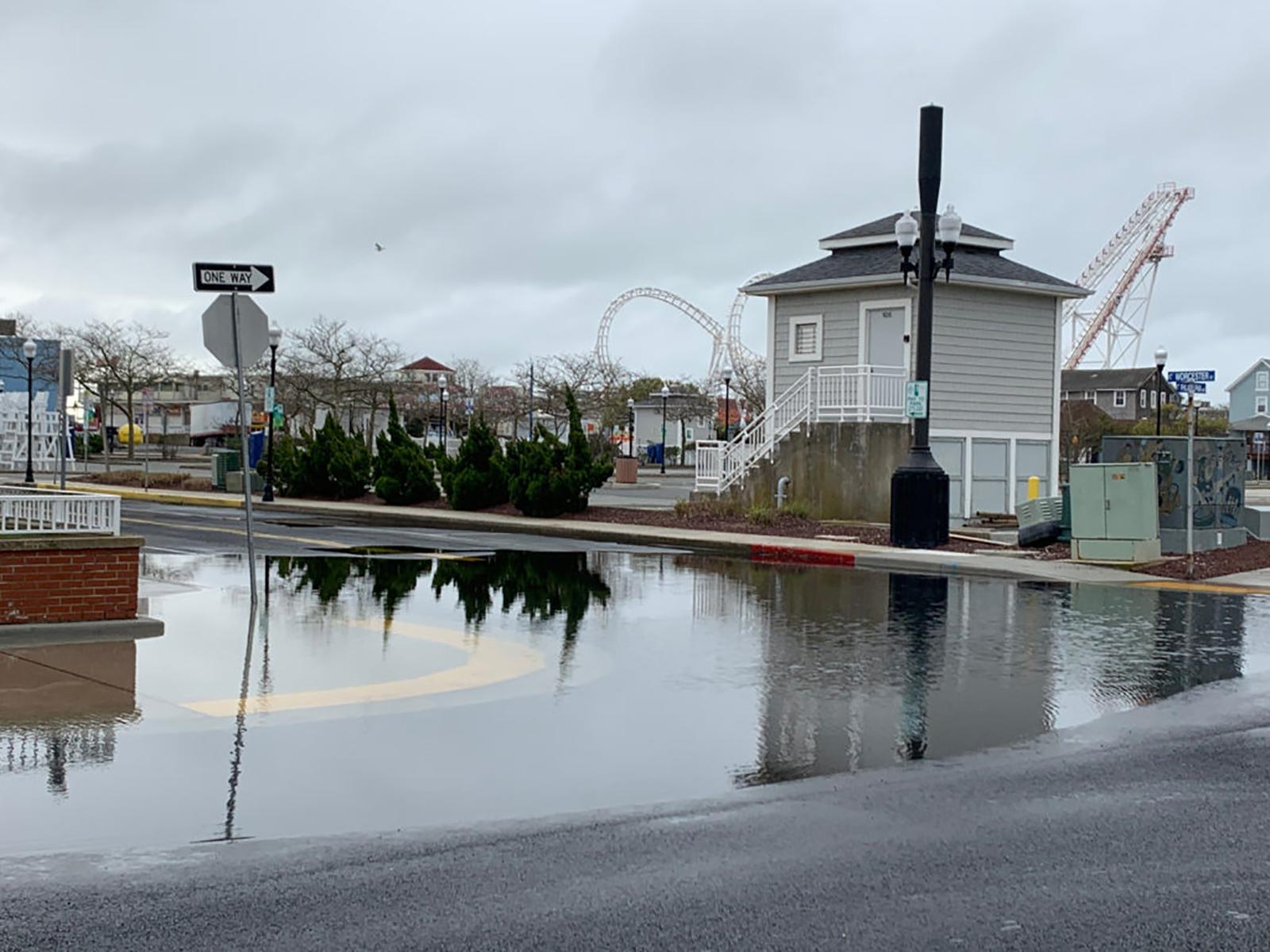Global sea level is rising because of climate change. Increasing temperatures cause sea level to rise due to 1) thermal expansion as the ocean water takes up more space as it becomes warmer and 2) the melting of ice sitting on land, such as mountain glaciers and polar ice sheets. The rate of global sea level rise is accelerating, and it will continue to increase as the climate continues to warm.
Relative, or local, sea level rise is an increase in mean sea level relative to a point on land. Maryland is experiencing higher rates of relative sea level rise than the global average due to several factors, including Maryland’s geographic position in relation to melting polar ice sheets and land subsidence. During the last ice age, glaciers covered the northeastern United States and the weight of the ice pushing down caused the Earth’s crust outside the ice sheet to bulge up. This ice sheet has now melted, but the crust is still returning to its original position, causing our region to slowly sink, or subside. This subsidence causes relative sea level in Maryland to rise at a higher rate than the global average, but most of the relative sea level rise we see is still due to climate-driven global processes.





